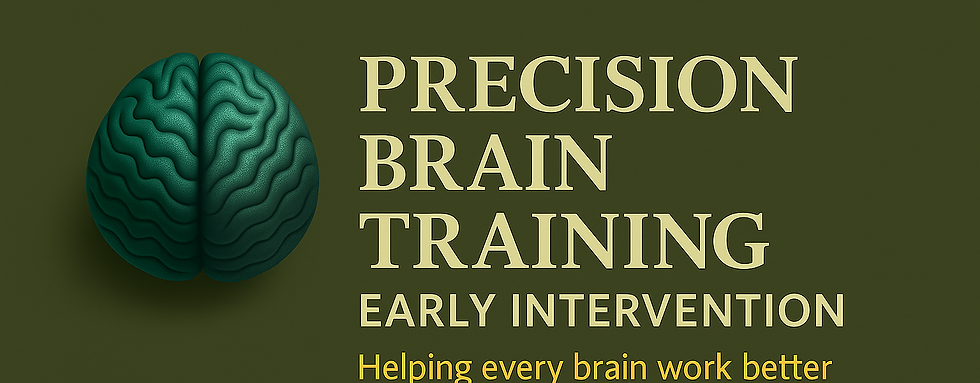
Interactive Metronome® in Early Intervention
Helping Little Brains Build Strong Foundations
The early years of life are a critical window for brain development. During this time, neural pathways are forming at lightning speed—shaping everything from motor skills to speech, attention, and emotional regulation.
When developmental delays or challenges appear in infancy or early childhood, early intervention is key. That’s where Interactive Metronome® (IM) steps in—providing powerful brain-based support for improving timing, attention, motor coordination, and communication.
What Is Early Intervention?
Early Intervention refers to services and therapies provided to children from birth to age 6 who show signs of delay in areas such as:
-
Gross or fine motor skills
-
Speech and language
-
Cognitive development
-
Sensory processing
-
Emotional or behavioral regulation
These early years offer the highest level of brain plasticity—which means children have an incredible ability to change, learn, and grow when given the right tools.
What Is Interactive Metronome?
Interactive Metronome is a neurosensory-motor training program that uses movement, rhythm, and real-time feedback to improve the brain’s timing and processing. Think of it as tuning the brain’s internal clock—helping all parts of the brain work better together.
During IM, children complete playful, rhythm-based tasks using hand or foot movements while listening to a steady beat. They receive immediate feedback if they’re too fast or too slow, which helps their brain learn to adjust and sync.
Why Timing Matters in Early Development
The brain’s timing system is foundational to:
-
Walking, crawling, climbing
-
Speaking clearly and in order
-
Listening and following directions
-
Regulating emotions and transitions
-
Learning to read, play, and socialize
When timing is off, children may appear clumsy, inattentive, impulsive, delayed in speech, or overwhelmed by sensory input.
IM works directly on these timing systems, giving children a stronger neurological base for growth in every area.
What IM Helps With in Young Children
Interactive Metronome is used in Early Intervention for children with:
-
Developmental delays
-
Sensory Processing Disorder (SPD)
-
Speech and language delays
-
Autism Spectrum Disorder (ASD)
-
Hypotonia or poor core strength
-
Coordination or balance issues
-
Apraxia of speech
-
Motor planning challenges (dyspraxia)
-
Attention or focus difficulties
Real Improvements We See
After completing a pediatric IM program, families often report:
✔️ Improved attention and play engagement
✔️ More organized movement and better coordination
✔️ Increased verbal expression or babbling
✔️ Better ability to listen, follow directions, and imitate
✔️ Calmer behavior and easier transitions
✔️ Faster progress in speech or OT services
Supported by Neuroscience
Research shows that millisecond timing is essential for higher-order thinking, behavior, and communication. IM strengthens these networks by targeting areas like:
Brain AreaRole
CerebellumBalance, rhythm, motor learning
Basal GangliaMovement coordination, initiation
Prefrontal CortexAttention, self-regulation, planning
Auditory & Visual CorticesProcessing sounds and sights quickly and accurately
A Parent-Friendly, Child-Friendly Approach
Our early childhood IM sessions are:
-
Play-based and fun
-
Short, sensory-friendly, and developmentally appropriate
-
Tailored to your child’s abilities and tolerance
-
Conducted with care, compassion, and encouragement
-
Measurable: we track timing and progress in real-time
Precision Brain Training™ Early Start Program
Our early intervention support includes:
-
IM for children ages 2.5 and up (or younger with modifications)
-
Coordination with your child’s SLP, OT, PT, or ECI provider
-
Parent education and home carryover ideas
-
Individualized progress plans and visual charts
-
Trauma-informed care and sensory accommodations
What Parents Are Saying
“My son couldn’t sit still for circle time. After IM, his balance improved, and now he’s listening and talking more, too!”
— Parent of 4-year-old
“Our daughter started showing more speech sounds after just a few sessions of IM. We paired it with speech therapy and saw major gains.”
— Mom of 3-year-old with apraxia